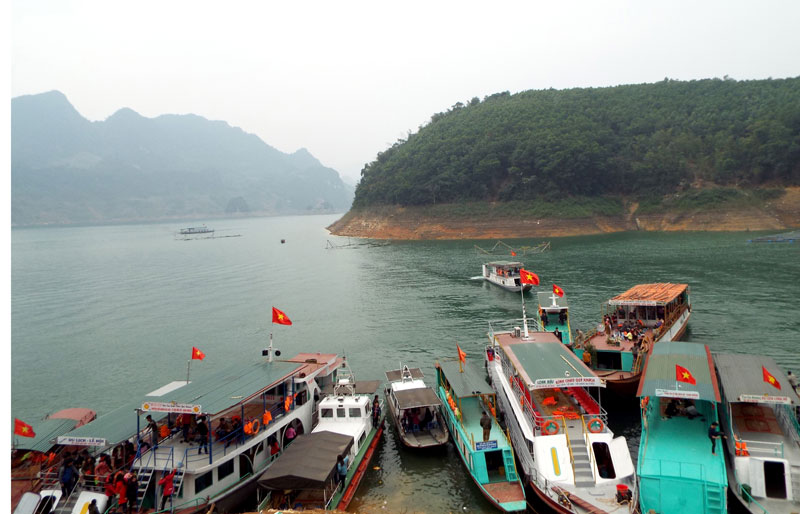
(HBO) - In the first 6 months of 2019, Hoa Binh province welcomed 2,050,000 tourists, gaining 68% of the year plan, increasing more than 400,000 turns of tourists compared to the same period in 2018.
In particular, there were 180,000 international visitors and 1,870,000 domestic visitors. Total revenue from tourism is estimated at 1,200 billion VND, reaching 60% of the year plan.
In the coming time, Hoa Binh province continues to pay attention to developing tourism. The province implements the cooperation program for tourism development in eight northwest provinces in 2019. Organizing cultural and tourism week to honor the cultural values, land and people of Hoa Binh in early November 2019.
Hoa Binh Province also continues to attract participation and spread the influence of competitions "Beautiful photos promoting Hoa Binh Lake in 2019" and the contest "Introducing Clips for Hoa Binh Lake, 2019" .
Located just a 20-minute drive from Hoa Binh City, Ora Hill Farmstay & Glamping Hoa Binh is a captivating new destination nestled in Mo hamlet, Bình Thanh commune, Cao Phong district. Combining farming with leisure, this tranquil retreat is perfect for those seeking balance, joy, and an immersive experience in the expansive beauty of nature.
Muong Bi - Tan Lac is renowned as one of the four famous Muong regions in Hoa Binh province. Blessed by nature with a favourable climate and stunning landscapes, Tan Lac holds great advantages for tourism development. The local tourism industry has made remarkable strides in recent times thanks to the attention and support from the local authorities and sectors.
With its strategic location, well-developed transport network, and diverse soil and climatic conditions, Hoa Binh is emerging as a must-visit destination in Vietnam's northwestern tourism corridor. The province boasts numerous attractions, including the Kim Boi hot springs (Kim Boi district), the Dau Rong cave complex (Cao Phong), the Mai Chau valley (Mai Chau), and the iconic Hoa Binh hydropower plant.
The northern mountainous province of Hoa Binh has been listed among the 71 most beautiful places to visit worldwide by the prestigious US travel magazine Condé Nast Traveller.
Hoa Binh province’s rich natural and cultural resources position it as a prime location for developing community-based tourism (CBT). In recent years, support from central and provincial policies, as well as assistance from non-governmental organisations, have encouraged local ethnic minority and mountainous communities to actively engage in the sector.


